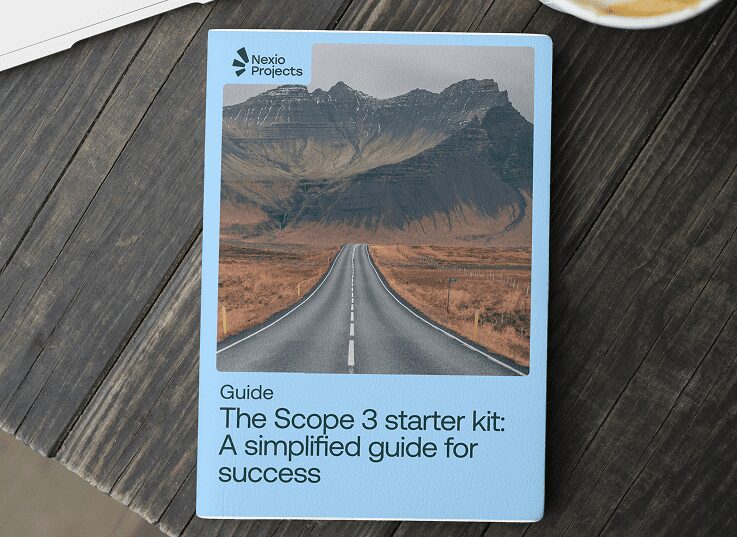The Scope 3 starter kit: A simplified guide for success

Download now
Nexio Projects needs the contact information you provide to us to contact you about our products and services. You may unsubscribe from these communications at any time. For information on how to unsubscribe, as well as our privacy practices and commitment to protecting your privacy, please review our Privacy Policy.
Guide content
Of all the emissions scopes, Scope 3 is perhaps the most important for organisations looking to accelerate their decarbonisation journey. This is not just because they are so significant, typically accounting for between 70% and 90% of an organisation’s total carbon footprint. It is also because they tend to be much more difficult to manage.
While Scope 1 and 2 emissions are often easier to track and mitigate since they are mostly within an organisation’s direct control, tackling Scope 3 emissions requires much broader adaptations. These can include collaboration across the entire value chain, supplier engagement, improved data collection and strategic decision-making in procurement, logistics and product design to drive meaningful carbon reductions. Indeed, a core purpose of measuring Scope 3 is to provide a solid basis for engaging stakeholders as active participants in the transition to more sustainable business practices.
Managing Scope 3 emissions is therefore key to meeting climate targets, ensuring regulatory compliance and satisfying investor expectations. For example, frameworks such as the Science Based Targets initiative (SBTi) require businesses with significant Scope 3 emissions to set reduction targets. In addition, transparent reporting can enhance brand credibility, improve supply chain resilience and uncover cost-saving opportunities. In short, Scope 3 emissions are key to driving sustainability while mitigating climate risks and strengthening long-term competitiveness.
Our guide explores how businesses can better understand, measure, and manage their Scope 3 emissions as part of a credible and impactful climate strategy.
Here’s what you’ll find inside:
-
What are GHG emissions scopes, and how are they defined?
-
Why does Scope 3 matter for your business?
-
How can Scope 3 be simplified for better understanding?
-
What should you consider when measuring your Scope 3 emissions?
-
How does Unilever approach Scope 3 reporting?
-
What does your Scope 3 reporting journey look like?
-
How can you prepare for effective data collection?
-
What are some tips for successful stakeholder management?
-
Are you ready to start calculating your Scope 3 emissions?
